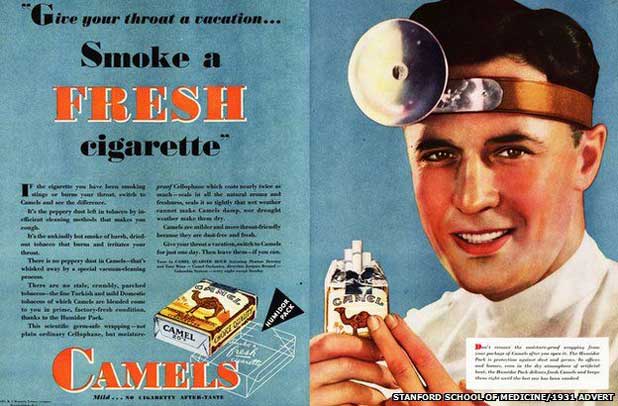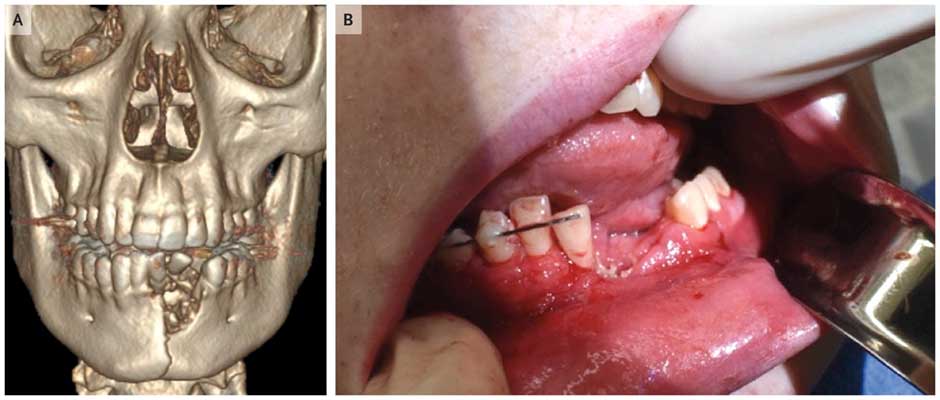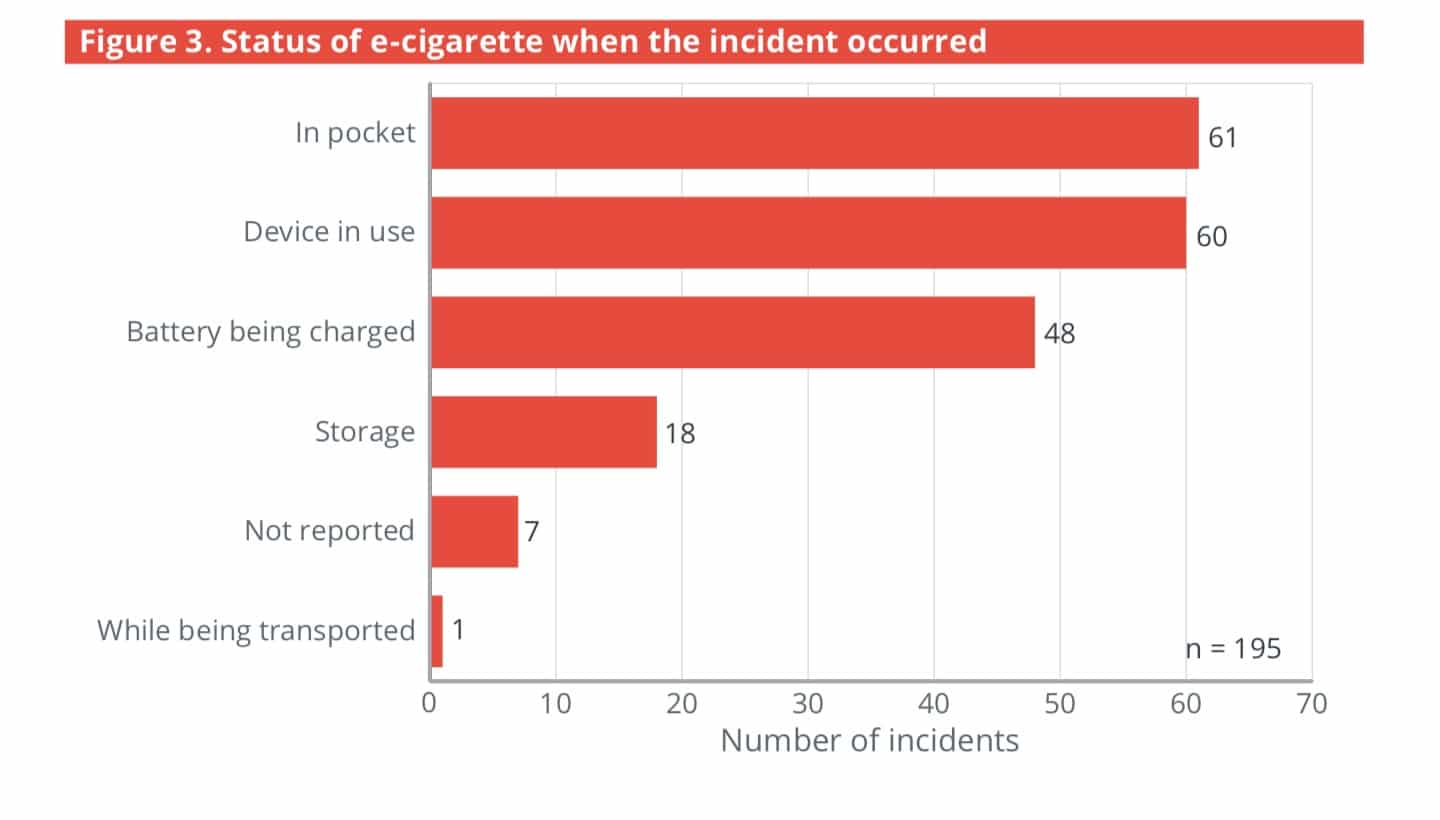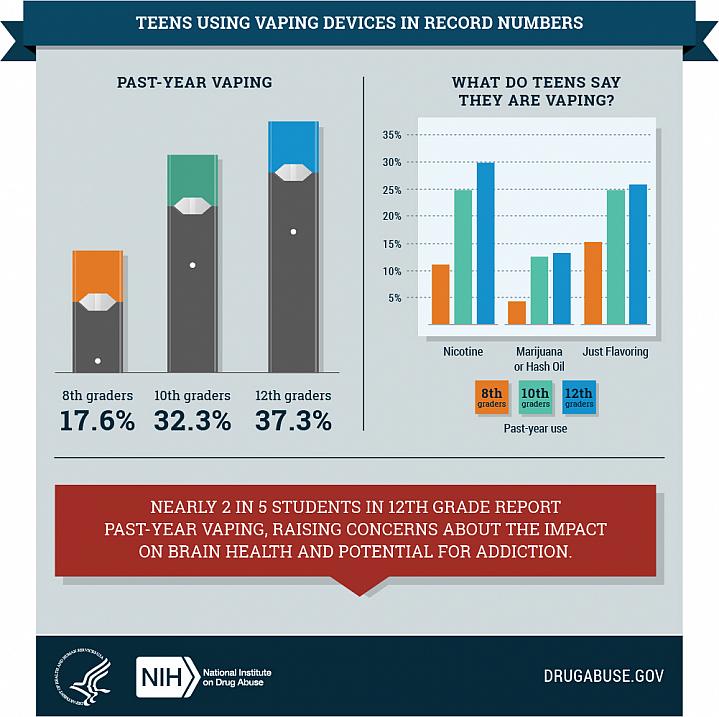Hello Tooth Fans!
One of the questions we routinely ask at a new patient visit is whether or not a patient has a tobacco habit. This isn’t because we’re nosy or because we want to judge you in some way, but because there are very important health consequences, including dental consequences, to this type of behavior.
Most of the time patients are already aware of the many effects tobacco use can have on their body, and some are already cognizant of the oral effects as well.
The struggle for so many is not that they don’t want to do what is right for their health, but rather that the addiction is so strong and the habit is so longstanding that it can feel next to impossible to actually kick it. In fact, I know several people who have been able to overcome a heroin addiction, yet they find the nicotine addiction much more challenging to overcome.
Part of this can be due to how socially unacceptable it is to feed your opioid addiction in public (you don’t see employers allowing time for “heroin breaks” during the workday) and, of course, the consequences are much more severe if you’re caught with an illegal substance. Even though smoking is not against the law, there have been many taxes and regulations passed in recent years which have restricted the practices of cigarette smokers.
I remember a time when there were smoking sections in restaurants, or when you’d have to walk through a cloud of cigarette smoke right outside the entrances to many buildings. Those who are older than 36 you might recall when smoking wasn’t restricted at all, but actually promoted in magazines and on television.

As science has taught us more about the deleterious effects of tobacco smoke on not only smokers, but the general public, legislation has made its public usage that much more difficult for those who partake. Enter the e-cigarette. Whether you believe it’s a genuine attempt to help those looking to kick the habit or a nefarious plot by big tobacco to keep you addicted, it was introduced as a healthier alternative to smoking.
“Vaping” sounds way more sophisticated than “smoking,” and the removal of tobacco introduces less harmful carcinogens into not only your body, but into the air around you. Gone are the days of exhaling a stinky smoke cloud, as we can now tantalize those around us with the luscious scent of Fruity Pebbles or Cotton Candy. In fact, the introduction of the e-cigarette or vape pen makes “smoking” look cool again, and is far more socially acceptable than chewing tobacco or conventional cigarettes. But are there really more dangers than you think, particularly in the oral cavity? Maybe you should read this before vaping…
Explosions & Such
Nothing says “safer cigarette” like a literal explosion in your mouth. A recent article published by the New England Journal of Medicine last week reminded us of some of the scarier sequelae of vaping.

A 17 year old in Utah lost several teeth and broke his jaw last year when his vape pen exploded while he was using it. The image on the left is a 3-D reconstruction of a cone beam image, on the right is 6 weeks after the extractions and fixation which required his jaw to be wired shut. He was lucky. A 24 year old in Texas lost his life this past January when his e-cigarette exploded, severing his carotid artery and causing a massive stroke. The U.S. Fire Administration (USFA) states, “The shape and construction of electronic cigarettes can make them (more likely than other products with lithium-ion batteries) to behave like ‘flaming rockets’ when a battery fails.”
USFA reports that between 2009 – 2016 there were 195 reported explosions or fires associated with e-cigarettes, causing 133 acute injuries.

And a more recent report in Tobacco Control places the number of explosion and burn injuries at 2,035 between just the years of 2015 and 2017 alone, postulating that the number of injuries is higher than we think, and urging more careful regulation of these devices.
While these stories are sad, and the images sobering, most of us will look at these as rare incidents and figure, “Ok, well, it’s still safer than cigarettes for most people, and at least it’s not causing cancer.” There are still many other factors to consider when we explore the health effects of vaping.
What’s in the Vape Juice?
The ingredients in vape liquids vary widely according to manufacturer, nicotine concentration, and flavor, but most compositions contain a mixture of water, propylene glycol, vegetable glycerin, then lesser amounts of food flavorings, and potentially nicotine.
Propylene glycol is a synthetic compound that is used in many food additives and considered generally safe for consumption by the FDA. In the mouth this product breaks down to acetic acid, lactic acid, and proprionaldehyde, which have toxic effects on tooth enamel and soft tissue (remember it’s the acidity in our mouths that contributes to our cavity rate). Additionally, propylene glycol has been known to cause dry mouth, which robs your teeth of the basic components in saliva that are supposed to be there to rescue them. Dry mouth + higher acid levels = more cavities and destruction of the dental work you already have.
Vegetable glycerin (aka glycerol or glycerine for all you Bush fans) is another food additive that can be used to help mix oil and water and as a sweetener. It is not cavity causing, and is even in most toothpastes because it helps prevent it from drying out, allowing it to be expressed smoothly from the tube. It’s also used to help stabilize dynamite (though apparently can’t stabilize those darned lithium ion batteries when they explode).
While the chemicals present in food flavors have been proven safe for consumption, many of their effects have not been studied on the lungs, so we know very little about what happens when you heat them up and inhale them. This database, composed by the University of North Carolina School of Medicine, has a good listing of ingredients in the various flavors in e-liquids.
In a 2015 study, researchers detected formaldehyde levels (a known carcinogen) in nearly all e-cigarette formulations that were higher than the amount contained when smoking traditional cigarettes. This study was criticized by e-cig advocates because they said the voltage levels at which this would occur were higher than recommended use, but in 2018 the same researchers amended their study and concluded that the formaldehyde levels were still higher than OSHA (Occupational Safety and Health Administration) workplace limits.
While many of the food flavorings don’t contain actual sugar, their cavity causing potential is substantial. A 2018 study “systematically evaluated e-cigarette aerosols and found that the aerosols have similar physio-chemical properties as high-sucrose, gelatinous candies and acidic drinks.” This was due to the propensity for these compounds to cause a 4 fold increase in the adhesion of the bacterial biofilm to enamel (making the bacteria more sticky and hard to remove) and a 2 fold increase in the formation of said biofilm. These factors together caused a 27% decrease in the enamel hardness compared to the control groups.
And let’s not forget our friend nicotine, which is the primary component in cigarettes that keeps people going back in the first place. The addictive levels of nicotine are substantial, and the same negative consequences that existed with traditional cigarettes are carried forward when we put nicotine in vape pens. Nicotine is a vasoconstrictor, which means it shrinks your blood vessels. This is the primary reason why smoking causes increased risk of heart disease and high blood pressure. If you tighten or shrink the blood vessels the blood pressure increases, putting increased strain on the elastic walls of your arteries. It also reduces the amount of blood flow going to the tissues, which is what makes wound healing more difficult among smokers. This same phenomenon occurs in the mouth (since, you know, the mouth is part of the body), and is the reason why smokers are more highly predisposed to periodontal disease. This also decreases your salivary rate, contributing to dry mouth which will then increase your susceptibility to decay.
So Maybe Vaping is OK Just To Quit Cigarettes?
So vaping isn’t good for you, but it’s better than smoking cigarettes, right? It could be a method used to get off those pesky cigarettes and then just quit the vaping, right?!
There is currently not a lot of research on this, but a recent study published in the NEJM evaluated this hypothesis and found that compared to other smoking cessation modalities (gum or patches), there was an 8% higher 1 year abstinence rate from cigarettes. So this is good, right?
Not really. Here’s why:
You are more likely to kick the cigarette habit if you use a vape pen than with other methods; however, the same study also found that 80% of those who were no longer using cigarettes were STILL using their vape pens, while only 9% of those in the other form of nicotine replacement therapy group were still using nicotine some other way.
Translation: It seems we’re simply substituting one addiction for another with the vape pen.

It’s also evolved into more than just a “stepping stone” for weaning oneself off of traditional cigarettes. The yummy flavors and sleek designs draw nonsmokers in as well. My husband considered “starting vaping” after seeing one of our friends do a cool “vape trick.” He figured he’d just get the one without the nicotine, and still be able to partake in the cool flavors and maybe even perfect some vape tricks of his own.
Fortunately, he’s married to a dentist so he never started vaping, even without the nicotine, but there are many other people (including kids!) who perceive vaping as cool and pick up the habit for that reason, not just to quit smoking.

An annual survey by the National Institute of Health (NIH) in 2018 revealed that 37% of 12th graders reported vaping, a 9% increase over the 2017 number of 28%.
The saddest part is that not all these kids are just vaping for fun; there are a significant number of them who are using the nicotine products and marijuana products as well. Students in 8th and 10th grade reported vaping in the past year as well.
From an Oral Health Perspective…
Any and all forms of nicotine can wreak havoc on your oral health. It seems from the research I’ve seen that vaping is not the miracle replacement for cigarettes. While there are significant advantages over cigarette smoking, your best bet is still nothing at all. I know this is easier said than done, and carries little weight coming from a lifelong non-smoker, but ultimately it’s best to have all the facts before making your decisions.
The CDC has some excellent resources for helping you to quit smoking, and of course, seeing your physician is always a great place to start as well. Even if you’ve tried to quit before and been unsuccessful, don’t give up. As Ralph Waldo Emerson said, “Our greatest glory is not in never failing but in rising up every time we fail.” You can do it. And we’re here to help.
Love & No More Explosives Near Your Mouth!,





